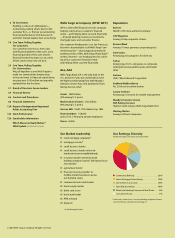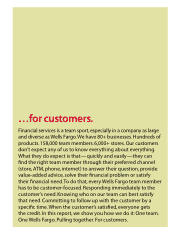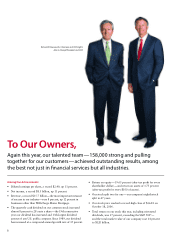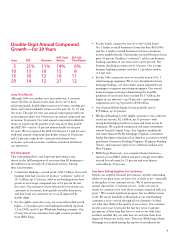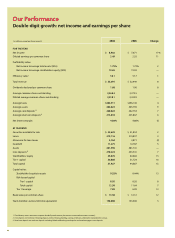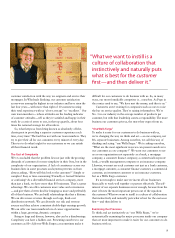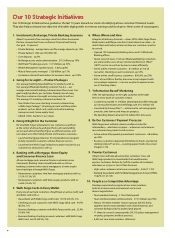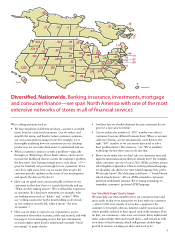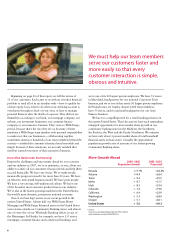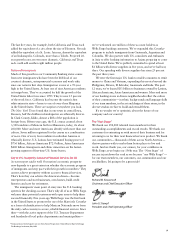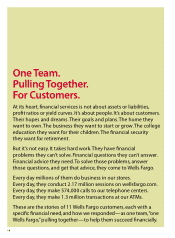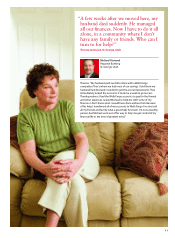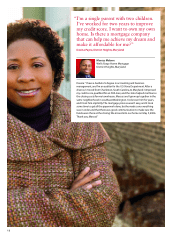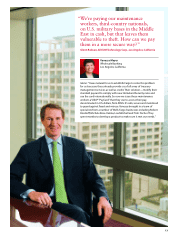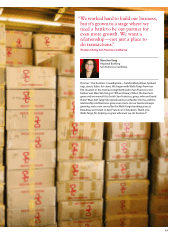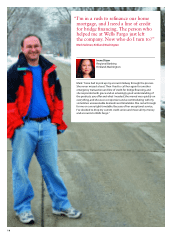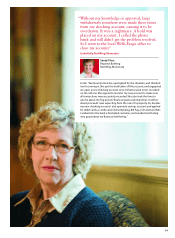Wells Fargo 2006 Annual Report Download - page 11
Download and view the complete annual report
Please find page 11 of the 2006 Wells Fargo annual report below. You can navigate through the pages in the report by either clicking on the pages listed below, or by using the keyword search tool below to find specific information within the annual report.
9
The last five years, for example, both California and Texas each
added the equivalent of a city about the size of Houston. Nevada
added the equivalent of a St. Louis. Arizona, almost the equivalent
of an Indianapolis. Colorado, more than a Toledo.
Projected 20-
year growth rates are even more dramatic. California and Texas
each
could add another eight million people.
Nation of Immigrants
Much of this growth in our Community Banking states comes
from new immigrants who have been the lifeblood of our
country’s dynamic, entrepreneurial economy and work ethic
since our nation’s first days. Immigration is now at a 70-year
high in the United States. At least one of nine American residents
is foreign-born. They’ve accounted for half the growth of the
United States labor force since 1995. They’re now 15 percent
of the work force. California has become the nation’s first
white minority state—home to one of every three Hispanics
in the United States. There are surprises everywhere you look.
The New York Times found that in one town in central Iowa,
Denison, half the children in kindergarten are ethnically diverse.
In Clark County, Idaho, almost a fifth of the population is
foreign-born. Fifteen years ago, the U.S. census counted about
3,500 residents of Mexican birth in Minnesota; today, it’s about
200,000. More and more Americans identify with more than one
culture. Seven million registered for the census as a combination
of races. One of every four residents in suburban America is
ethnically diverse. U.S. Latinos have estimated buying power of
$736 billion, African-Americans $723 billion, Asian-Americans
$400 billion. Immigrants and ethnic minorities are the fastest-
growing segment of first-time U.S. home buyers.
Key to U.S.Prosperity: Access to Financial Services for All
A recent report said it well: Our nation’s economic prosperity
now depends to a great extent on whether the economic progress
of immigrants can keep pace with their growth in numbers.*They
cannot achieve prosperity without access to financial services.
That’s how they can achieve the American dream—become
entrepreneurs and start businesses, own homes, build credit
histories and save for retirement.
The immigrants’ main point of entry into the U.S. banking
system is the checking account. That’s why all of us at Wells Fargo
welcome these potential customers with open arms to help them
succeed financially. Five years ago Wells Fargo was the first bank
in the United States to promote the use of the Matricula Consular
as a form of identification to help Mexican Nationals move from
the risky cash economy to secure, reliable financial services. Since
then—with the active support of the U.S. Treasury Department
and hundreds of local police departments and municipalities—
we’ve welcomed one million of these account holders as
Wells Fargo banking customers. We’ve expanded this Consular
program to include immigrants from Guatemala, Argentina and
Colombia. We also partner with U.S. consulates and embassies
in Asia to offer banking information to Asians preparing to come
to the United States. We’ve publicly committed to spend at least
$1 billion with diverse suppliers in five years, and we’re half way
there. Our spending with diverse suppliers has risen 25 percent
the past three years.
We were the first major U.S. bank to enable consumers to remit
money to China and Vietnam, expanding this service beyond the
Philippines, Mexico, El Salvador, Guatemala and India. The past
12 years, we’ve loaned $33 billion to businesses owned by Latinos,
African-Americans, Asian-Americans and women. More and more
of our banking stores in diverse neighborhoods reflect the culture
of their communities—in ethnic backgrounds and language skills
of our team members, in the art and design of those stores, in the
diverse vendors we hire to build and remodel them.
It’s no wonder we’re optimistic about the future of our
company and our country!
The “Next Stage”
We thank our 158,000 talented team members for their
outstanding accomplishments and record results. We thank our
customers for entrusting us with more of their business and for
returning to us for their next financial services product. We thank
our communities—thousands of them across North America—
that we partner with to make them better places to live and
work. And we thank you, our owners, for your confidence in
Wells Fargo as we begin our 156th year. The “Next Stage” of
success is just down the road as we become “one Wells Fargo”—
for our team members, our customers, our communities and our
stockholders. It’s going to be a great ride!
Richard M. Kovacevich
Chairman and Chief Executive Officer
John G. Stumpf
President and Chief Operating Officer
* “Financial Access for Immigrants: Lessons from Diverse Perspectives,” Federal Reserve Bank of Chicago,
The Brookings Institution, May 2006.


